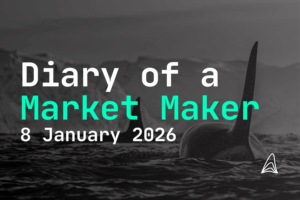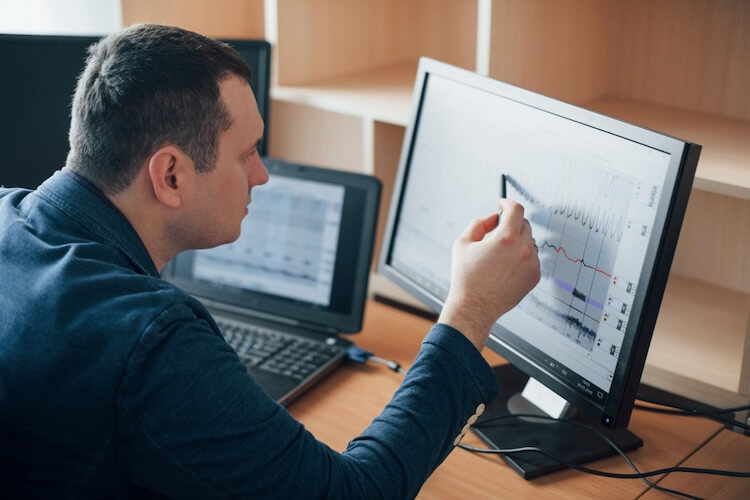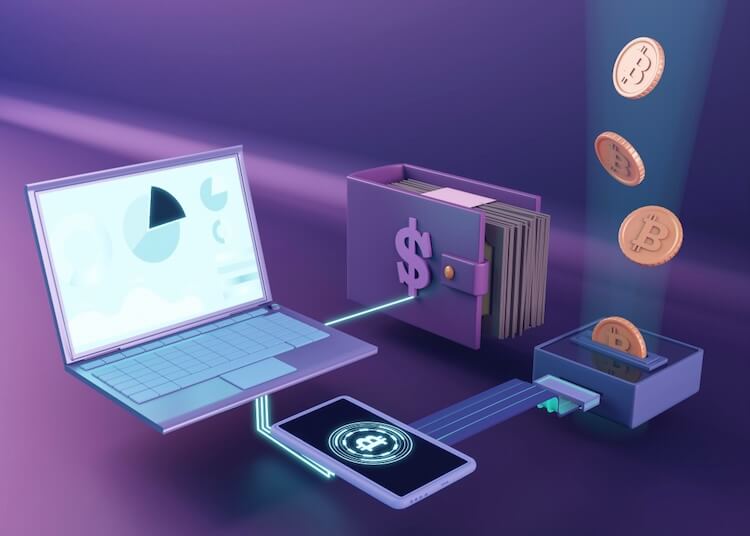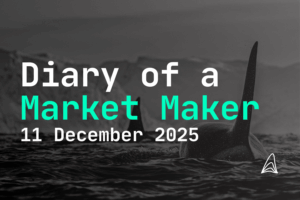
How to Test a Crypto Token Before Launch
- Jakob Brezigar
- Last updated: 20.May 2024
- Reading time: 6 min
Launching a new crypto token without testing it first is like baking a cake without tasting the batter—you never know if you’ll end up with something delicious or a complete disaster. Let’s dive into the essential steps you need to take to ensure your token launch goes off without a hitch.

Table of Contents
Why is a smart contract audit important before launching a crypto token?
A smart contract audit identifies vulnerabilities and potential exploits, ensuring the security and functionality of your token. This step can prevent future financial losses and protect your project from malicious attacks.
What is the purpose of deploying a token on a testnet?
Deploying on a testnet allows you to simulate real-world usage, identify bugs, and test your token’s performance without real-world consequences.
How does a bug bounty program help in token testing?
A bug bounty program engages the community to find hidden vulnerabilities by offering rewards, helping ensure your token is secure and robust before launch.
Key Takeaways - How to Test a Crypto Token Before Launch:
- Conduct a smart contract audit to identify vulnerabilities and potential exploits before launching your crypto token.
- Deploy your token on a testnet to simulate real-world usage and identify any bugs or issues.
- Launch a bug bounty program to engage the community in finding hidden vulnerabilities in your smart contract.
- Perform load testing to ensure your token can handle high transaction volumes without crashing or slowing down.
- Test integration with wallets and exchanges to guarantee seamless transactions and a smooth user experience.
Conduct a Smart Contract Audit
Before you even think about launching your crypto token, conducting a smart contract audit is crucial. An audit helps identify vulnerabilities and potential exploits that could compromise your token. It’s like having a mechanic check your car before a long road trip. A thorough audit can reveal hidden bugs or loopholes that could be exploited. Look for reputable firms that specialize in smart contract audits, and don’t be afraid to ask for references and case studies. Remember, a detailed audit can save you from future headaches and financial losses.
For instance, imagine driving your car from New York to Los Angeles. You wouldn’t want to start that journey without a proper check-up, would you? Similarly, your token needs that pre-launch scrutiny. Auditors will examine your code line by line, looking for weak spots. They might even simulate attacks to see how well your contract holds up. This process can take anywhere from a few days to a couple of weeks, depending on the complexity of your token. It’s time well spent, considering the potential risks involved.
Deploy the Token on a Testnet
Once your smart contract passes the audit, the next step is to deploy your token on a testnet. Think of a testnet as a sandbox environment where you can play around without any real-world consequences. Popular testnets include Ethereum’s Ropsten, Kovan, and Rinkeby. Deploying on a testnet allows you to simulate real-world usage and interactions, ensuring your token performs as expected. This step is particularly important for identifying any bugs or issues before launch that weren’t caught during the initial audit.
On a testnet, you can experiment with various transaction types, token transfers, and smart contract interactions. You get to see how your token behaves in different scenarios. Will it handle a high volume of transactions smoothly? Are there any unexpected glitches when users interact with it? Testing these aspects in a controlled environment helps you avoid unpleasant surprises later on.

Launch a Bug Bounty Program
After deploying on a testnet, it’s time to get the community involved by launching a bug bounty program. Offering rewards for identifying bugs is like turning a group of tech enthusiasts into your personal quality assurance team. Platforms like Gitcoin and HackerOne are great places to start. A well-structured bug bounty program can help uncover hidden vulnerabilities and ensure your token is as secure as possible.
Consider this: bug bounty hunters are like treasure hunters, but instead of searching for gold, they’re looking for bugs. And they can be incredibly thorough. These bounty hunters will scrutinize your smart contract from every angle, trying to break it. They’ll test its limits and push its boundaries, all in the name of finding flaws. By incentivizing these experts with rewards, you can tap into a diverse pool of talent and knowledge. It’s a win-win situation—hunters get rewards, and you get a more secure token.
Conduct Peer Reviews
Peer reviews are another vital step in the testing process. Engaging with other developers and blockchain experts to review your smart contract code can provide valuable insights and feedback. It’s like having a second pair of eyes check your work for errors. Peer reviews can highlight potential issues that may have been overlooked and suggest improvements to enhance the overall functionality of your token.
Peer reviewers can provide fresh perspectives and catch mistakes that slipped through the cracks. They can also suggest optimizations to make your code more efficient and secure. It’s a collaborative effort that enhances the quality of your project.
Perform Load Testing
Load testing is essential to determine how your token will perform under heavy usage. This step involves simulating high transaction volumes to ensure your smart contract can handle the load without crashing or slowing down. Load testing helps identify bottlenecks and optimize performance, ensuring your token can scale effectively. It’s akin to stress-testing a bridge to make sure it can withstand heavy traffic.
During load testing, you’ll bombard your smart contract with transactions to see how it holds up. Load testing tools can simulate thousands of transactions per second, pushing your contract to its limits. If any issues arise, you can address them before going live. This testing phase ensures your token remains functional and efficient, even under the most demanding conditions.

Test Integration With Wallets and Exchanges
Your token needs to work seamlessly with various wallets and exchanges. Testing integration with popular wallets like MetaMask, Trust Wallet, and others as well as exchanges, ensures smooth transactions and user experience. Integration testing is crucial to avoid any compatibility issues that could hinder your token’s adoption. It’s like ensuring your new app works on both iOS and Android without a hitch.
Think about it: users will interact with your token through different platforms. Some might use a hardware wallet for added security, while others prefer the convenience of a mobile app. Your token must function flawlessly across these platforms. Integration testing involves performing transactions, checking balances, and ensuring compatibility with wallet interfaces. It’s about making sure users can easily buy, sell, and store your token without any issues.

Check Regulatory Compliance
Regulatory compliance is an often overlooked but critical aspect of launching a crypto token. Ensuring your token meets all legal requirements can save you from potential legal troubles down the line. This includes complying with KYC (Know Your Customer) and AML (Anti-Money Laundering) regulations. It’s wise to consult with legal experts who specialize in cryptocurrency to guide you through the regulatory landscape effectively.
Regulations can vary greatly depending on the jurisdiction. Some countries have stringent requirements, while others are more lenient. Working with legal advisors, you can understand the specific rules that apply to your token. This might involve registering your token with regulatory bodies, implementing KYC procedures, and ensuring your smart contract adheres to local laws. Compliance not only protects you legally but also builds trust with users and investors.
How Can We Help You With Token Testing at Orcabay
At Orcabay as crypto market makers, we don’t just set your project on autopilot. We take a customized approach with each client, monitoring your project daily and providing suggestions based on trading activities to help improve it. We’re fully regulated and compliant with EU laws, offering full transparency with detailed reports and a live dashboard. As developers first, we can quickly adapt our strategies to meet your project’s unique needs. Our in-house developed trading algorithms come equipped with specialized profit and principal protection mechanisms.
Launching a new crypto token is a complex process that requires careful attention to detail and thorough testing. By following these steps and leveraging expert assistance, you can ensure a successful and secure token launch. Whether you’re a seasoned developer or a newcomer to the crypto space, thorough testing is your best bet to avoid pitfalls and achieve your project’s goals. And remember, at Orcabay, we’re here to help with steps along the way.
Disclaimer: The information provided in this article is for informational purposes only and does not constitute financial, investment, or other professional advice. All opinions expressed herein are solely those of the author and do not represent the views or opinions of any entity with which the author may be associated. Investing in financial markets involves risk, including the potential loss of principal. Readers should perform their own research and consult with a licensed financial advisor before making any investment decisions. Past performance is not indicative of future results.

Jakob Brezigar
Jakob, an experienced specialist in the field of cryptocurrency market making, boasts an extensive international presence. With Orcabay, he has skillfully managed major operations and deals for a wide array of global stakeholders.



